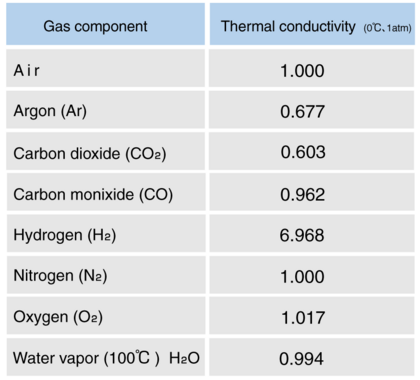The TCD's bridge circuit features four thermal sensors (electrical resistances) with identical specifications integrated into the detector. Two of these sensors are situated in each of the two sample cells, while the remaining two are located in the two reference cells. This configuration forms an electrical circuit comprising two resistances that vary identically within the sample cells and two resistances that remain constant within the reference cells.
The bridge voltage ("E" in Figure 1) and output voltage ("V" in Figure 1) by a measurement function in the bridge circuit are actually located in the signal processing section.
As the concentration of the sample gas drawn into the sample cell fluctuates, the thermal conductivity of the gas in the cell changes accordingly. Consequently, the surface temperature of the thermal sensor within the cell is also affected. Changing temperature in a thermal sensor is detected as changing electrical resistance. Since the reference cell is filled with nitrogen (N2), the electrical resistance detected in the reference cell is always constant. By combining these four electrical resistances and signal processing, the change in the concentration of the sample gas is detected as a change in the output voltage of the bridge circuit ("V" in Figure 1). Under certain conditions, this output voltage is proportional to the concentration of highly thermally conductive gas in the sample gas, so measuring the output voltage of the bridge circuit measures the concentration of highly thermally conductive gas.






